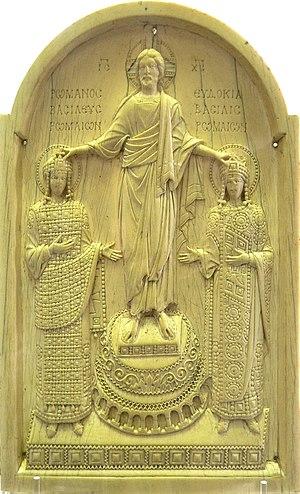| Millennium: | 2nd millennium |
|---|---|
| Centuries: | |
| Decades: | |
| Years: |
|
| Gregorian calendar | 1068 MLXVIII |
| Ab urbe condita | 1821 |
| Armenian calendar | 517 ԹՎ ՇԺԷ |
| Assyrian calendar | 5818 |
| Balinese saka calendar | 989–990 |
| Bengali calendar | 475 |
| Berber calendar | 2018 |
| English Regnal year | 2 Will. 1 – 3 Will. 1 |
| Buddhist calendar | 1612 |
| Burmese calendar | 430 |
| Byzantine calendar | 6576–6577 |
| Chinese calendar | 丁未年 (Fire Goat) 3764 or 3704 — to — 戊申年 (Earth Monkey) 3765 or 3705 |
| Coptic calendar | 784–785 |
| Discordian calendar | 2234 |
| Ethiopian calendar | 1060–1061 |
| Hebrew calendar | 4828–4829 |
| Hindu calendars | |
| - Vikram Samvat | 1124–1125 |
| - Shaka Samvat | 989–990 |
| - Kali Yuga | 4168–4169 |
| Holocene calendar | 11068 |
| Igbo calendar | 68–69 |
| Iranian calendar | 446–447 |
| Islamic calendar | 460–461 |
| Japanese calendar | Jiryaku 4 (治暦4年) |
| Javanese calendar | 972–973 |
| Julian calendar | 1068 MLXVIII |
| Korean calendar | 3401 |
| Minguo calendar | 844 before ROC 民前844年 |
| Nanakshahi calendar | −400 |
| Seleucid era | 1379/1380 AG |
| Thai solar calendar | 1610–1611 |
| Tibetan calendar | 阴火羊年 (female Fire-Goat) 1194 or 813 or 41 — to — 阳土猴年 (male Earth-Monkey) 1195 or 814 or 42 |

Emperor Romanos IV (left) and Empress Eudokia are crowned by Jesus Christ.
Year 1068 (MLXVIII) was a leap year starting on Tuesday (link will display the full calendar) of the Julian calendar.
Events
By place
Byzantine Empire
- January 1 – Empress Eudokia Makrembolitissa, wife of the late Emperor Constantine X, marries General Romanos Diogenes (a member of a prominent Cappadocian family) – who is proclaimed co-emperor as Romanos IV of the Byzantine Empire.[1]
- Autumn – Romanos IV begins a campaign against the Seljuk Turks, leading a Byzantine expeditionary force (which is in poor condition). He is successful in recapturing the fortress city of Hieropolis (modern-day Manbij) near Aleppo in northern Syria.[2]
- Winter – Romanos IV leaves a portion of his army as a rear guard at Melitene. The Byzantine garrison fails to check an Seljuk raid that manages to sack Amorium (penetrating deep in Byzantine territory). Romanos winters near Aleppo before returning to Constantinople.[3]
Europe
- Norman conquest of southern Italy: Norman forces under Robert Guiscard (duke of Apulia and Calabria) lay siege to the Byzantine city of Bari.
- Battle of the Alta River: The Cumans defeat the Kievan Rus' forces of Grand Prince Iziaslav I, and his brothers Sviatoslav II and Vsevolod I.
- Kiev Uprising: The city of Kiev rebels against Iziaslav I, in the aftermath of the Kievan Rus' defeat against the Cumans.
England
- Siege of Exeter: Norman forces under King William I (the Conqueror) take the city of Exeter after an siege of 18-days.
- William I begins a campaign in the East Midlands to put down the rebellions at Nottingham, Stafford, Lincoln and York.
- Edgar the Ætheling takes refuge with King Malcolm III of Scotland along with Edgar's sister Margaret, who marries King Malcolm.
- May 11 – William I brings his wife Matilda of Flanders to England. She is crowned queen in Westminster Abbey.
Africa
- September – Zaynab an-Nafzawiyyah marries Abu Bakr ibn Umar, leader of the Almoravids, and becomes his queen and co-regent.
Asia
- Spring – Emperor Yi Zong of the Western Xia (or Xi Xia) dies after a 19-year reign. He is succeeded by his 7-year-old son Hui Zong, who assumes the throne (until 1086).
- May 22 – Emperor Go-Reizei dies after a 23-year reign, leaving no direct heirs to the throne. He is succeeded by his brother Go-Sanjō as the 71st emperor of Japan.
By topic
Geology
- March 18 – An earthquake affects the Near East, with a maximum Mercalli intensity of IX (Violent). The shock has a magnitude greater than 7, and leaves about 20,000 people dead.
Births
- August 1 – Taizu (Aguda), emperor of the Jin Dynasty (d. 1123)
- Abu al-Salt, Moorish astronomer and polymath (approximate date)
- Ermengarde of Anjou, duchess of Aquitaine and Brittany (d. 1146)
- Haakon Magnusson (Toresfostre), king of Norway (d. 1095)
- Henry I, king of England (approximate date) (d. 1135)
- Peter I, king of Aragon (approximate date)
- Robert de Ferrers, 1st Earl Derby (d. 1139)
Deaths
- January 11 – Egbert I, margrave of Meissen
- May 22 – Go-Reizei, emperor of Japan (b. 1025)
- November 10 – Agnes of Burgundy, duchess of Aquitaine
- Abulchares, Byzantine general and catepan
- Ali ibn Yusuf al-Ilaqi, Persian physician
- Argyrus, Lombard nobleman and general
- Böritigin, ruler of Transoxiana (Kara-Khanid Khanate)
- Choe Chung, Korean Confucian scholar (b. 984)
- Eadnoth the Constable, English landowner
- Ephraim ibn al-Za'faran, Jewish physician
- Ralph the Staller, English nobleman
- William IV (or Guillem), French nobleman
- William of Montreuil, Italo-Norman duke
- Yi Zong, emperor of Western Xia (b. 1047)
- Vijayaditya VI, king of the Eastern Chalukyas (unconfirmed)
References
- ^ John Julius Norwich (1991). Byzantium: The Apogee – The Choice of Emperor, p. 344. ISBN 0-394-53779-3.
- ^ Brian Todd Carey (2012). Road to Manzikert – Byzantine and Islamic Warfare (527–1071), p. 133. ISBN 978-1-84884-215-1.
- ^ George Finlay (1854). History of the Byzantine and Greek Empires from 1057–1453, p. 34. William Blackwood & Sons.